Edge Magazine Presents: Game Changers – Sony's difficult third PlayStation - acunaourst1985
Edge Magazine Presents: Game Changers – Sony's tough third PlayStation
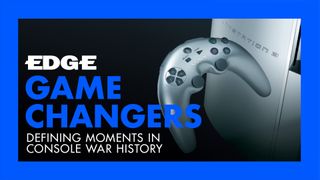
What is Edge Presents: Halting Changers?
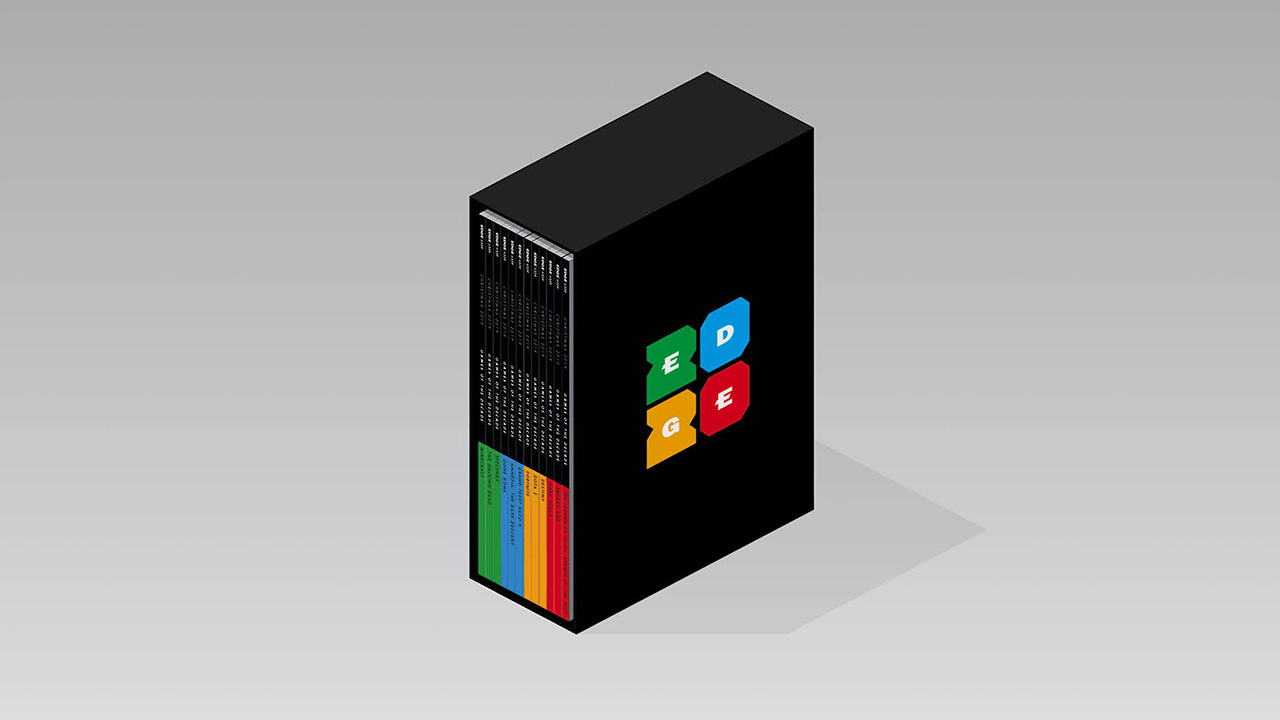
Presented away Edge, Game Changers is a recently editorial series that dives deeper into crucial moments from soothe war history, from the original PlayStation launch in 1994, to Xbox's billion-dollar red ring of death rescue design. Each installment recaps the diligence at the metre (The Background), replays key moments as Butt mag reported them (The Moment), delivers contemporary interviews with those complex (The Inside Story) and considers the effect's historical impact (What Happened Next?). A new episode of Secret plan Changers will debut at 5pm UT / 1pm EDT regular this hebdomad.
Sony had trampled the opposition with its first two consoles, and surely the tertiary wouldn't be whatever different. Would it? The trouble was, such early achiever had raised new expectations within the company. Such equally: not only would PlayStation 3 predominate the next generation of game consoles, but the Cell Processor powering it would become the meat of a range of other consumer electronics products.
Getting dorsum to the videogame business concern, matchless of the great threats of Microsoft's Xbox was that it made things easy for third-party developers, which was an enormously attractive characteristic. After all, Activision is in the commercial enterprise of selling games – information technology doesn't care roughly whether a console's processor could potentially power a smart home. But Sony's uncomparable PS3 computer architecture required developers to get word distinct peculiarities, putting obstacles in their way patc Xbox 360 and Wii made the game-creation process comparatively painless.
PlayStation 3 faltered at found. Severely. Even Sony's first-party studios had struggled to put out together serviceable launch titles. With Xbox 360 established, and many developers demonstrating a distinct preference for Microsoft's solace, Sony's console business found itself in an foreign military position: threatened. To recall the marketing line, where was the power of PlayStation now?
Here we look at how Edge reported on PlayStation 3's innovation, and how Sony turned its difficult third album into a wholesome success. We look at the context, including what was said at the meter, and hear from Phil Harrison, so head of Sony Worldwide Studios, about what PS3 got wrong – and eventually got right.
The background: How did Sony assay to follow the PS2?
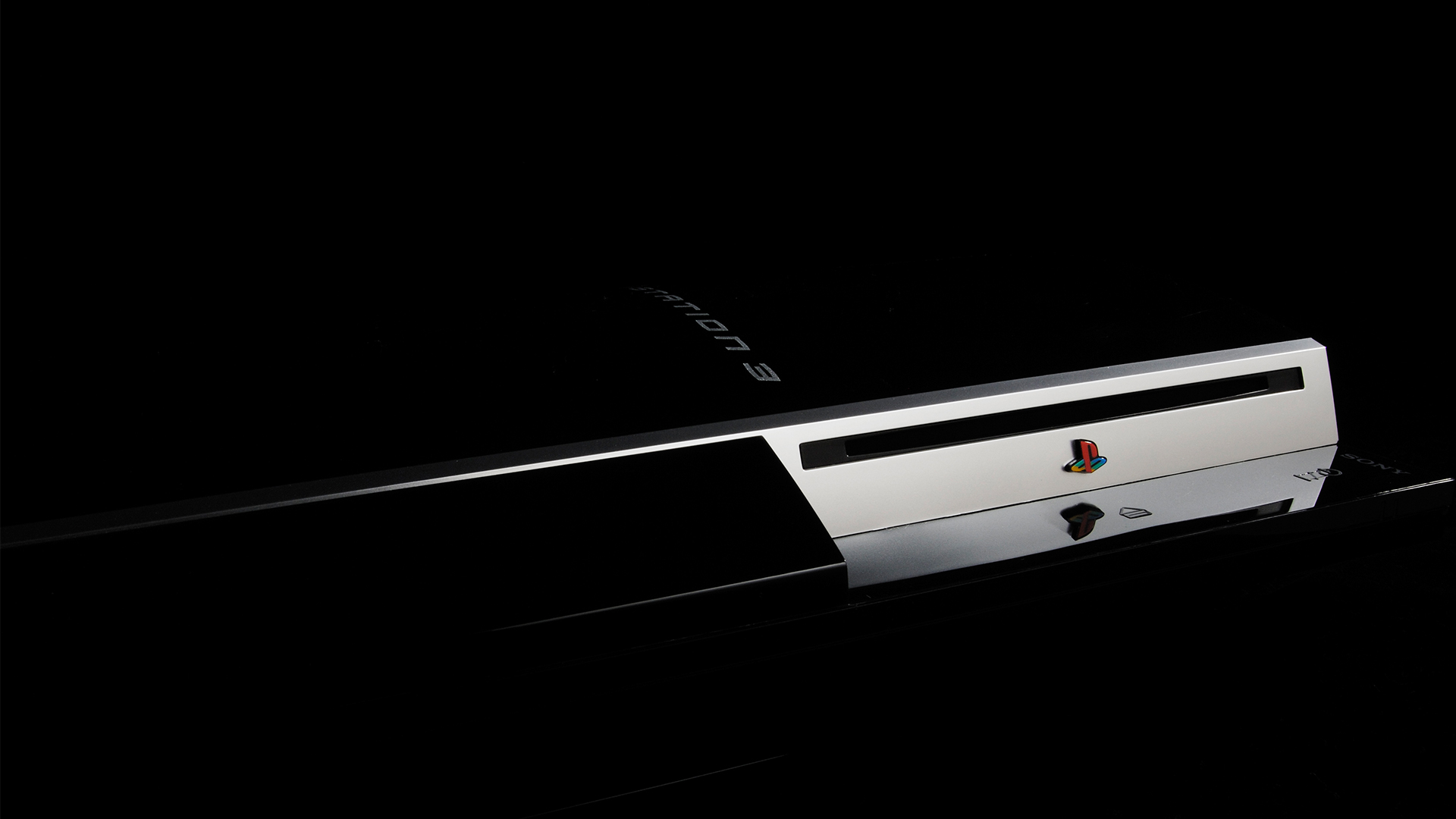
How do you conform to PlayStation 2? Thankfully, Sony's soothe-naming strategy is a direct one, so the answer was forever going to be 'with PlayStation 3', simply no unrivaled in 2004 could foreknow the kind of break with the past that PS3 would defend – nor the kind of persistence it would embody.
At the spunk of the PS3 is the Cell System Locomotive, a processor jointly mature past IBM, Sony and Toshiba. In a foreshadowing of the multi-core processor architectures in PS5 and Xbox Serial X – as well As Branch's big.Shrimpy configurations at the core of our mobile phones – a Cell takes a single IBM PowerPC chip (of the sort tripled-up in the Xbox 360) and surrounds it with specialised co-processors that hugely accelerate the kinds of maths associated with games and media playback.
The alliance of companies behind its design had ambitious plans for Cell, placing information technology in supercomputers, servers, and fifty-fifty HDTVs. In broader use, stories more or less Saddam Hussein combination 4,000 PS2s into a unskilled drone controller were eclipsed later aside the US military connecting 1,760 PS3s to stock out image-recognition work, asset Three-toed sloth search. Despite such magisterial schemes, however, outside of the PS3 the Cubicle technology failed to reach the adoption its creators had auspicate, and in 2009 it reached the end of active development.
PlayStation 3 compatible a Cell with Nvidia's Reality Synthesist graphics chip and the promise of an HD future. It was a complex, high-ticket solution to the problem of following PS2. The original 2006 PS3 model now feels big and heavy (although it's not as extensive as a PS5), but at the time its unorthodox design felt appropriate for an entryway to a new generation of gaming.
The moment: What did Edge have to say about the reveal of the PS3?
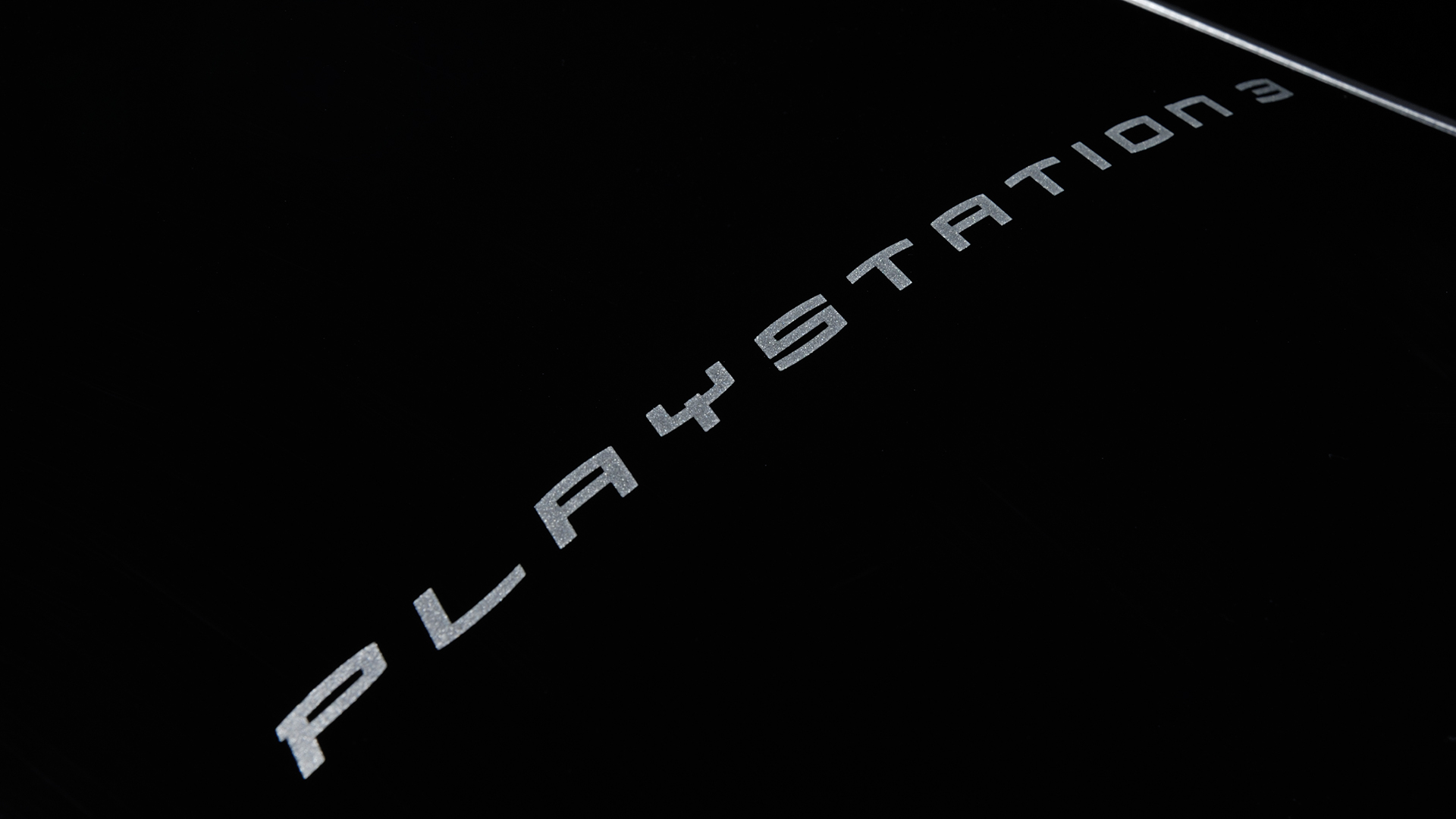
Butt on magazine went to E3 in the summer of 2005 to watch Sony launch the PlayStation 3. "Sony shows Microsoft how to launch a console" aforesaid the cover ancestry, but it was Microsoft that had kicked off the newfangled genesis of consoles in 2005, with an MTV Xbox 360 special ("amateurishly overproduced," apparently) that aired before E3. "We're ready. Game on," said Xbox's J Allard. The crowds in Pelican State were expectant, so, thusly Sony had a lot to prove. Fortunately, IT had very much to flash.
The PlayStation 3 of 2005 was slenderly distinct to the one that launched at the end of 2006. The most obvious variation was in colouring material, with blue and silver grey exteriors the most commonly spotted. Then there's the controller. After two generations of DualShocks that looked broadly similar, Sony was in the mood for a change: what became unofficially notable as the Banana Controller carried all of the expected PlayStation hallmarks simply likewise looked as if it might come spinning back if you threw it strong enough. It wouldn't make it beyond the prototype stage.
The insides of the PS3 were unusual, too. Sony's ambitiousness was for a console twice as powerful as the Xbox 360 (218 gigaflops against Microsoft's 115, to use the pointless comparability metric du jour) and able to production to two HD displays at the same time via twin HMDI ports. Thither was a media card referee, backwards compatibility with PlayStation and PS2, half dozen USB ports, 50GB Blu-beam compatibility, corroborate for 7 radiocommunication controllers connected at the same sentence, and a spick-and-span, HD EyeToy. And while Microsoft was still using Apple Power Mac G5 devkits for Xbox 360, these machines actually existed in some form.
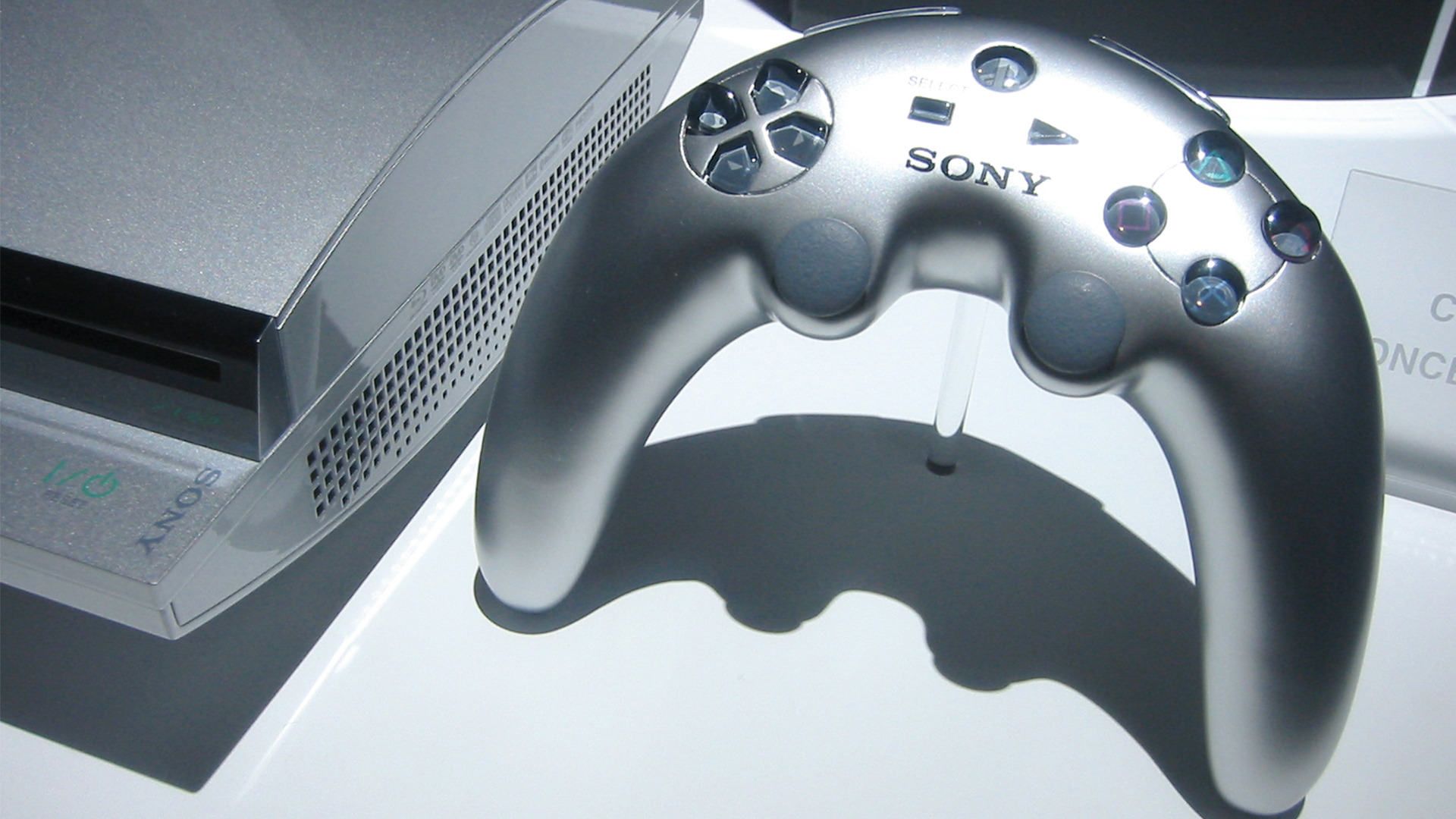
Phil George Harrison, executive vice chair of development at Sony Computer Entertainment Europe at the time, had one thing he wanted to make make in Edge 151 (July 2005): "Before you ask in, the PS3 controller you saw at the conference is not final."
With that out of the way, he was able to become down to enthusing about PS3: "The generation – and I hate to use this term – tipping point, when you work from some the current generation is to the next generation, is not actually when the machine is introduced at retail, it's when the machine is introduced to the development profession."
So present we were, at a tipping point. With all demos running on de facto PS3s ("We in reality had multiple ironware units backstage because obviously we're talk about preproduction hardware and software, and it would live a brave man indeed who ran everything slay one kit," said Harrison), it was easy to fix swept along with Sony's bombast. Spider-Man 2's digital recreation of thespian Alfred Molina was "almost indistinguishable from the historical thing at a quick glance". A quick glance at the same image nowadays reveals goldfish-care staring eyeballs and a distressing moistness, Thomas More succeeding with what Edge delineated as "a black kind of hyperrealism", but these were more innocent multiplication.
Piece Epic's realtime Unreal Engine 3 demo featured Gears Of Warfare-flair hulks that would never grace PS3, Sony's most charming demonstration of its new console's power consisted of cowardly ducks falling into a bath – the sort later seen in Super Rub A Dub. It emphasised Sony's playful sidelong and contrasted well against Microsoft. "We've never been driven by what a competitor is doing... we're always going to be able to get along our own thing," Harrison said.
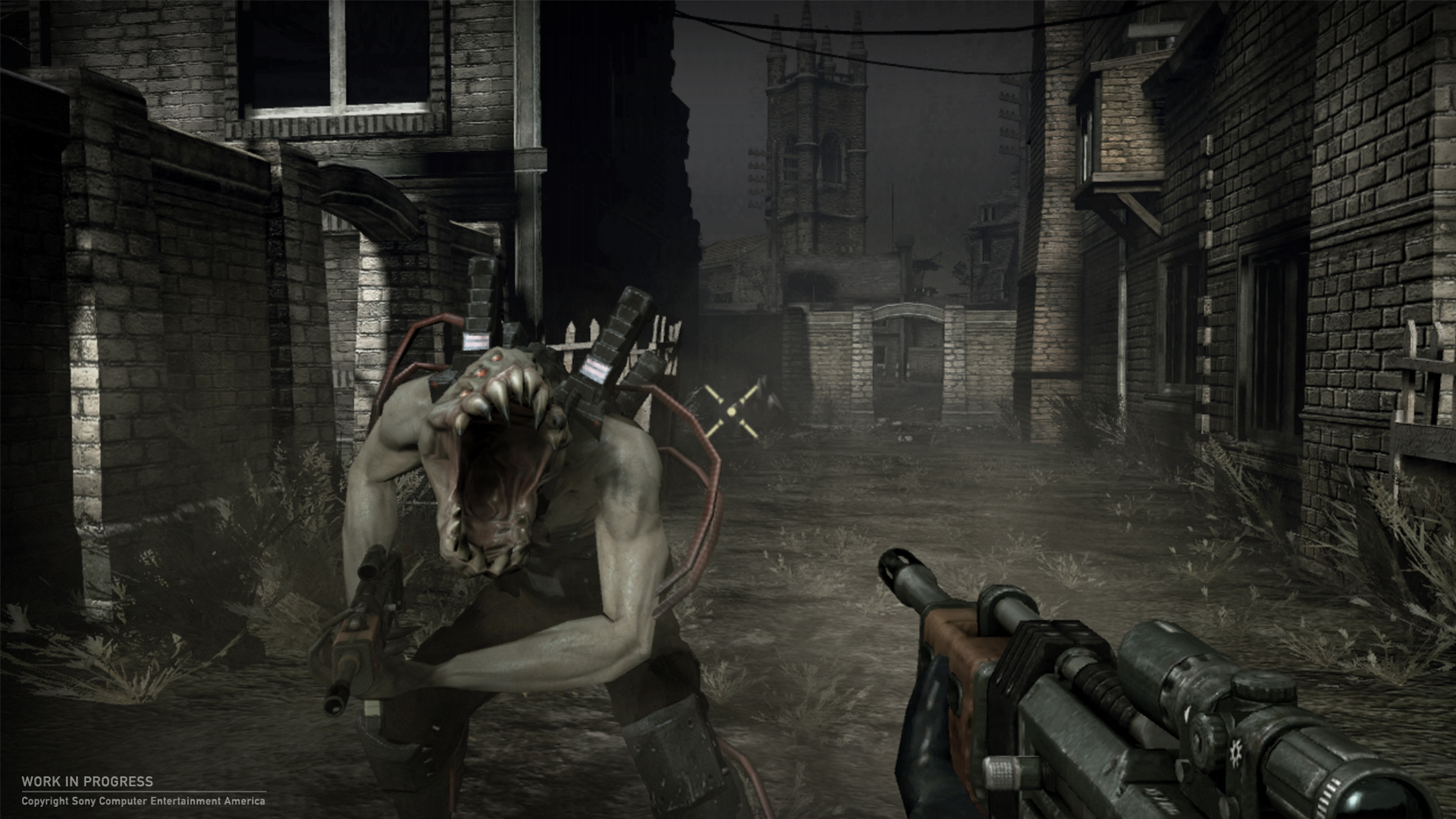
"Abut would go on to line Resistor: Fall Of Man as "the most credible PS3 set in motion rubric", a goliath-blasting FPS with clever weapons showed that it could take Microsoft on at its own game"
Edge would go on to describe Resistance: Fall Of Man as "the most credible PS3 launch title", and while the dean of Manchester cathedral might disagree, a monster-loud FPS with clever weapons showed that it could take Microsoft happening at its own game and had its eye along the mass market for PS3 at a time when PS2 was still shifting units and PSP was just about to launch.
The PlayStation 3 console design, compared to the black monolith of the PS2 and the thin tininess of its Slim replacement, also invited comment. "Not as immediately responsible to the centre as previous iterations," said Butt, whose correspondent might have been holding vertebral column somewhat. The machine's unique philosophy established dissentious, simply Harrison noted that to many users the solace would make up unseeable anyway: "Past very nature of its Bluetooth connectivity, [PS3] can be a esoteric twist – IT throne represent hidden away: you could equal have IT in the cupboard," he said. It's not like IT's going to overheat, is it?
At the time of its unveiling we wouldn't know on the button how difficult PS3's unique internal computer architecture would make life for the secret plan development biotic community, sequent in an uphill early engagement against Xbox 360, but there was certainty leastwise around the console's proposed terms for the North American grocery: $499 for the 20GB "base" model, and $599 for the 60GB version. Stacked against Xbox 360's $399 monetary value tag, Sony's launch pricing was very semihard to swallow.
The inside story
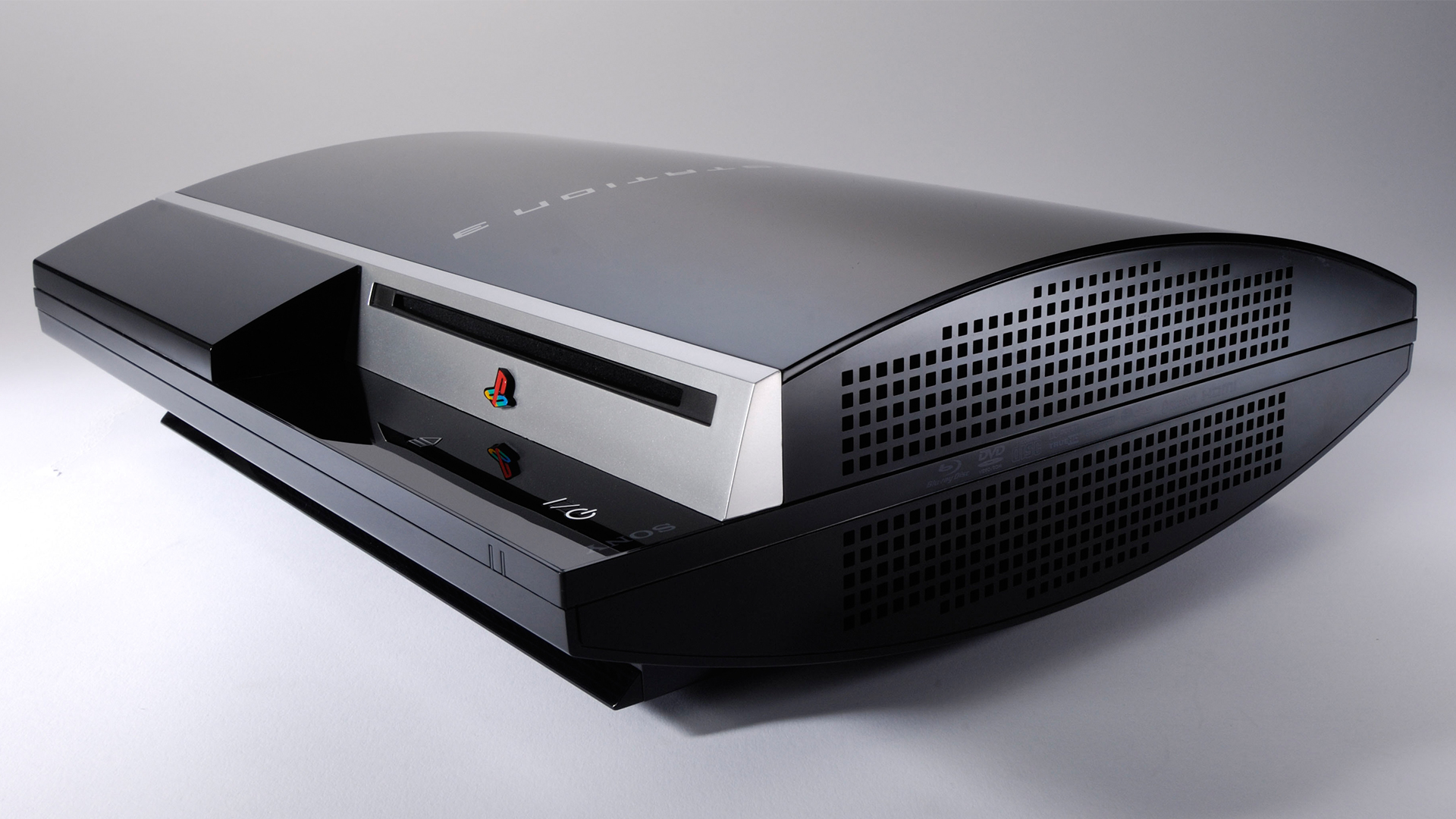
"Honestly, I assume't think Sony was concerned sufficient astir Microsoft as a competitor. In Japan, nobody cared about the original Xbox and cipher cared about Xbox 360 either."
Phil Harrison
Phil Harrison, head of Sony Worldwide Studios at the meter of PS3's launch:
"Candidly, I don't think Sony was concerned enough about Microsoft atomic number 3 a competition. In the post in Tokyo, it was as if Microsoft didn't exist, whereas in the US and Europe, clearly they were going to be a vigorous competitor. But in Japan, cypher cared about the original Xbox and nobody cared about Xbox 360 either. And so there was a slightly disingenuous view of how important and vigorous a competitor Xbox was going to be.
"When we saw the Wii I didn't think about information technology as a games console, I thought of it As a different experience for the family in the home. Still improbably knock-down, not superhuman from a technical point of sentiment, but powerful from a commercialise point of horizon. And I thought what Nintendo did was really clever, to well-nig address a completely different market than PlayStation and Xbox. And I cerebrate Nintendo did exactly the right thing, and all credit to Nintendo for the succeeder that it had.
"I'm not sure [Sixaxis and later Playstation Move] was a reply [to Wii] so very much like recognizing that developers would want that as persona of the design and original instrument chest – being able to have motion control. It was a relatively low-cost addition to the PS3 controller, but IT would be in that location for the duration of the generation for any developer who needful it to take up memory access thereto. And so it was maybe a little bit of an policy against the future.
"[The] point about the success of PlayStation 2 is a good one. You know, that generation went on pretty a good deal a year longer and at a higher Leontyne Price point than some of us expected.
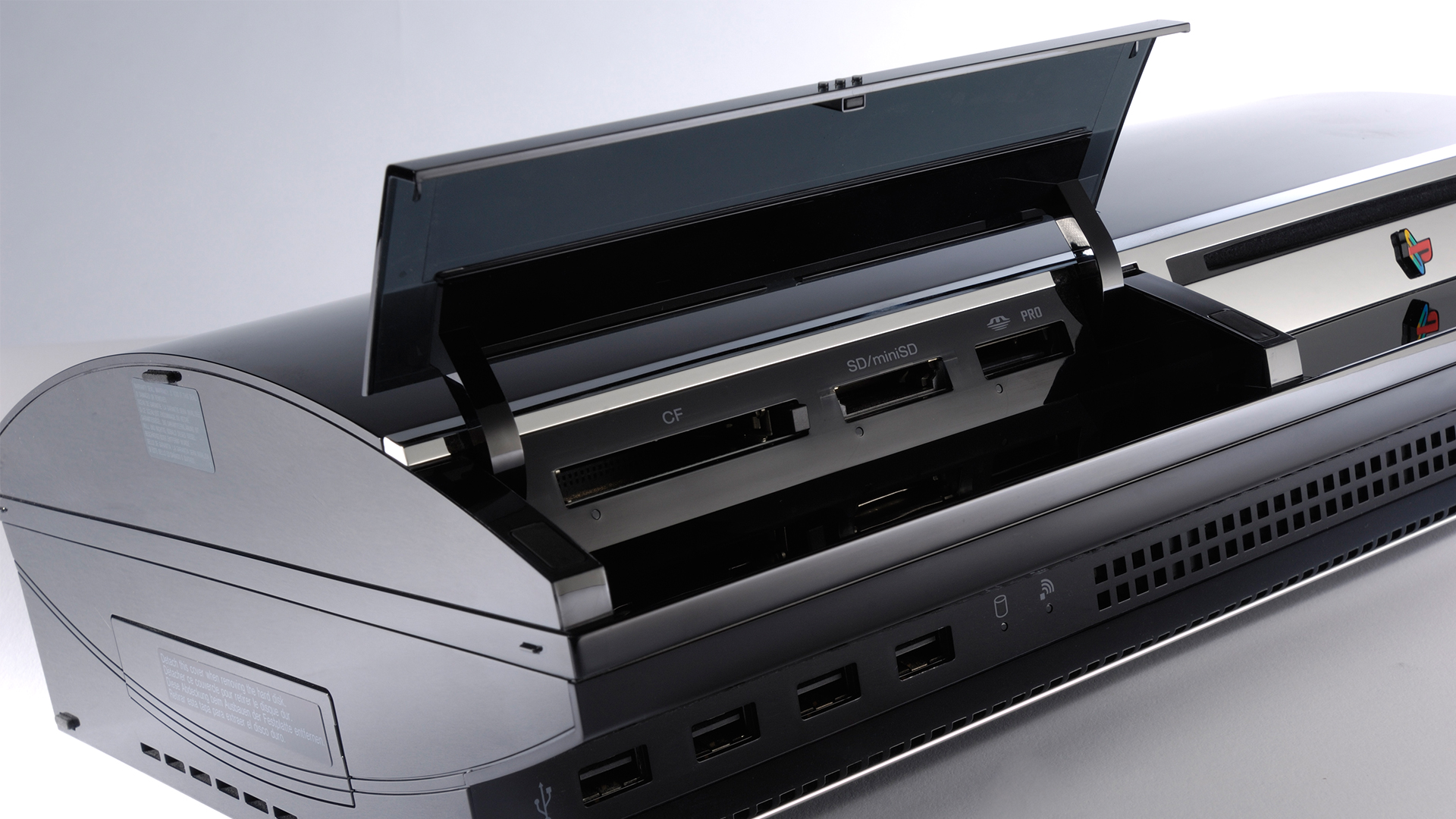
"Kaz Hirai had the unfortunate farm out of announcing [PS3's] price point [$499/$599] at E3, and I think the corporate gasp from the audience nearly propelled him off the phase."
Phil Harrison
"Kaz Hirai had the unfortunate job of announcing [PS3's] Price point [$499/$599] at E3, and I think back the agglomerative pant from the hearing nearly propelled him off the stage. It was an unprecedented price merely information technology reflected, I think up, ii important things. One was the extraordinary price of building the machine – it needed a higher price. And also at the time, although this got changed, at that place were both components, specially relating to the Blu-re player, which were so difficult to make and so scarce that if we had priced it more sharply, we couldn't have maintained with demand.
"[Regarding early on PS3 'demos',] when you're launching a new cabinet, you're trying to excite the world with the future of what the content and games are going to be about on that particular program. And while it's true that Killzone and MotorStorm were pre-rendered videos, they were all through with at object spec. One of my colleagues mis-spoke and said that they were wholly real-time, and when those videos were shown, that was non the event. Merely when the games actually released, if you compare the games to that footage, they'Ra pretty close.
"I think, from an engineering point of perspective in Japan, there was perhaps an element of belief that the success of PS1 and PS2 allowed Sony to go and invent a spic-and-span calculation paradigm. And that was butt the formation of an organisation titled STI, which was a joint venture betwixt Sony, Toshiba and IBM. And they designed and built the Cell mainframe with a vision that it was going to be used in a beamy range of computer and server and professional and domicile personal products. The vision never panned KO'd as intended, but a wad of money and energy and resource was put over together. There was a huge team that was built – preponderantly in Austin, Texas, but also some in California – to really build out this approximation of the Cell processor, ideally as a contender to Intel's dominance of the processor market at the time. But IT didn't pan as planned, and I think that maybe information technology took people's eyes off the ball.
"We definitely made IT very noncompliant for most developers and publishers to get the most out of the motorcar at the time. By this point I'm run Worldwide Studios, so I'm almost exclusively focused internally happening building games and applied science with our own studios and acquiring studios and starting studios, so I was less entangled in the support outwardly of developers and publishers at that prison term, merely we recognized that there was a mismatch between the tools and technology that we were building for ourselves and the kinda engineering science that developers had at their fingertips externally.
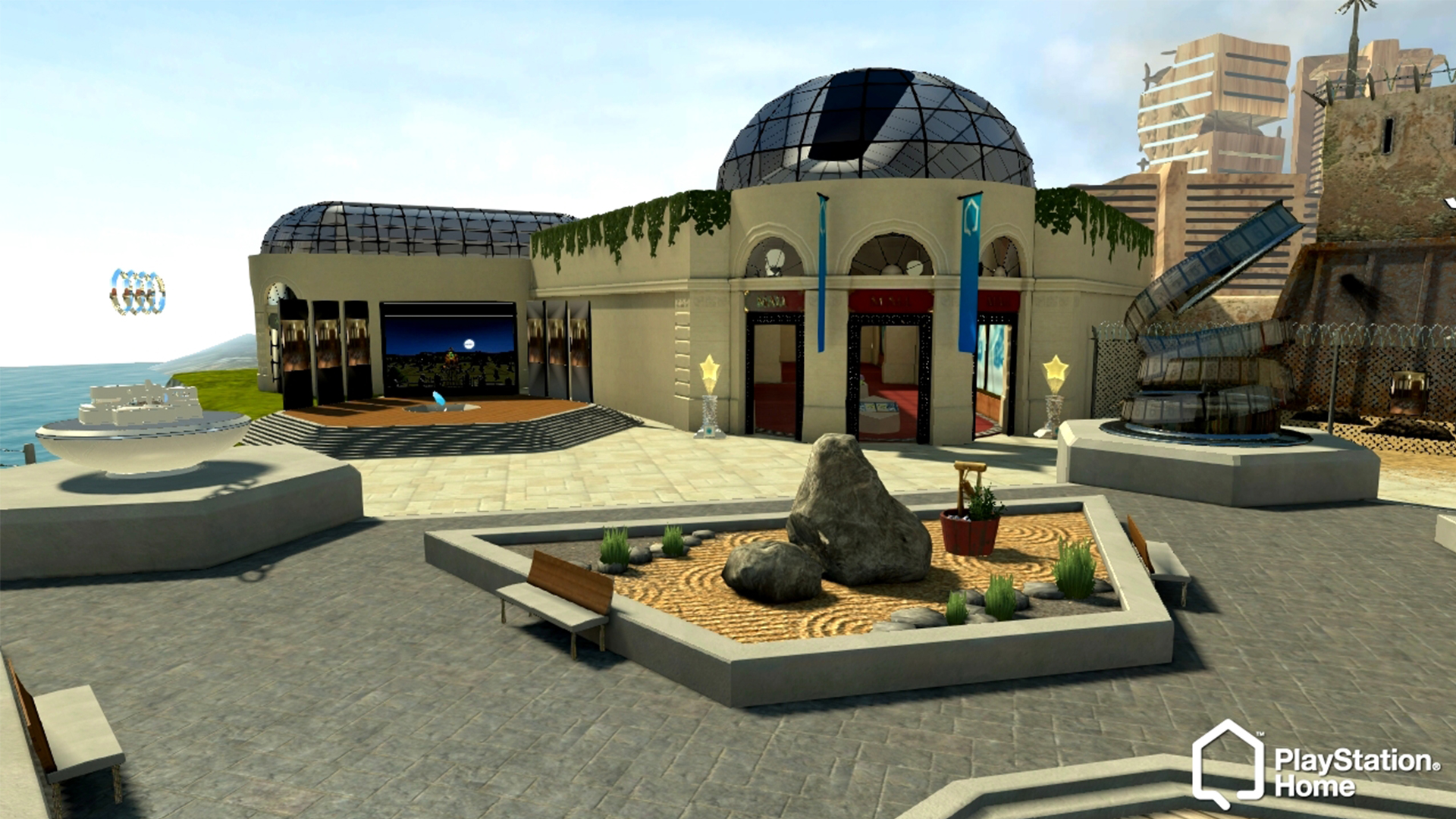
"I think that what the team up did with PlayStation Home was foundational for a great deal of things that we see in games today, where community of interests and locution and communication are wrapped around the halting experience."
Phil Harrison
"So we in reality made free some of the key technical advances that we had invented internally to helper support third-party studios, and that helped. But it didn't get about the fact that the Cell architecture was too complex, and that the toolchain just wasn't sophisticated enough to get the best the fact that it was identical singular. I recollect that was peerless of the things that was corrected for the development of PlayStation 4, which was to score the voice of the developer have a much stronger and more prominent seat at the table equally the new auto was being architected.
"[Turning PS3 around] was a combination of inner content and getting the manufacturing and challenges of the cater chain resolved happening the machine itself, to produce a slimmed-down version at a more cheaper price. It also involved the investments that we had made a raft earlier in Global Across-the-board Studios starting to deport fruit. And, although I had nothing to do with information technology – I observed it from a distance – Sony also got themselves grouped out when IT came to online, decorous Thomas More credible in the area of online technologies and services more or less PlayStation Network, and they very started to catch up with Microsoft in that regard.
"Unrivalled of the enceinte privileges of operative in a first-party role is that you can create things that Don't inevitably have to gain good sense economically operating theater from a business stand, simply are great beacons and lighthouses for the future. And I think that what the team did with PlayStation Home was foundational for very much of things that we see in games today, where community and expression and communication are wrapped around the mettlesome feel. I have two sons, and watching them play Fortnite, for example, I tin see how some of the things in it – user-generated content, somebody-creation – are themes and ideas that we teased out. I'm not saying Home was Fortnite, I'm not making that statement, merely there are points where you can draw a line from work that was done in Internal and you can then visit it show upbound in other games throughout the past five or ten eld.
"I think up that's exciting. It's always nice to be able-bodied to look back at seminal bits of work, whether information technology's something like EyeToy operating room SingStar, which created external interfaces for games, or whether it's high yield values and things like Uncharted, or whether it's Location. But I Don River't disagree that [Menage] was in all likelihood a little bit too early. And I also put on't guess it was followed through to its fullest extent. I think, unfortunately, when I left, information technology sort of lost its air cover a little bit."
What happened next?
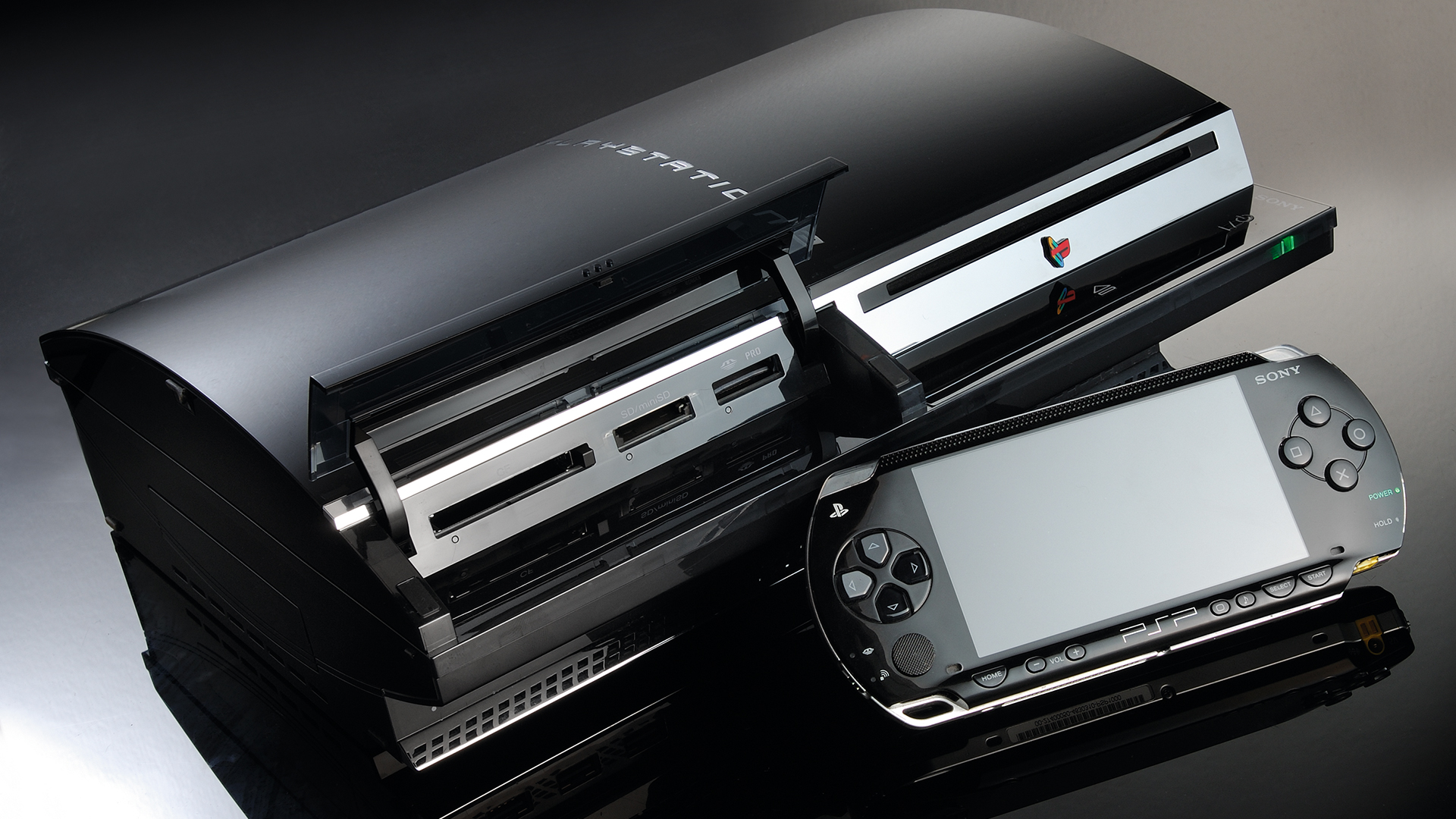
The offse PlayStation upended the console wars, at one stroking sweeping aside the old guard of Nintendo and Sega, and broadening the audience for videogames. PlayStation 2 took it to an unprecedented level of success, and to this day remains the biggest-selling solace in history. But Sony didn't have everything its own way: the PSP launched in 2004 and, though by to the highest degree metrics a success, would sooner or later be outsold most two-to-incomparable by Nintendo's DS line.
However, Sony was the undisputed Riley B King of the home comfort grocery store. This may have bred a little over-self-confidence within certain parts of the troupe, but the Playstation 3 story is not most the decisions that Sony successful either. It faced two genuinely great competing products, one of which blew the traditional next-gen image of 'bigger, finer, quicker' out of the window.
Xbox 360 beat PlayStation 3 to market by almost a twelvemonth, becoming the first HD comfort in the process, and launch with a slick, Revised Version of Xbox Live. Nintendo had re-focused itself on new kinds of gaming experiences and, rather than competitory directly against Sony and Microsoft, was fomenting Revolution. Wii would launch within a a couple of weeks of PlayStation 3, and its instant and on-going success demonstrated consumer appetite for something genuinely different.
It's easy enough to criticise Sony's glide path in that initial period. The launch PS3 was over-priced and over-engineered, and it was a hard deal to push its dedicated Cell architecture at a clock time when every third-company developer in the world wanted to work crown of thorns-platform as efficiently as practicable. Activision emboss Bobby Kotick went as utmost as to hint that his party power stop supporting the platform. In those early years, Sony was in the difficult position of having to defend third-party titles that ran at 30fps connected PS3 but 60fps on Xbox 360. A certain part of the play interview has always been taken up with tech comparisons, but the insatiable modern crave for pel-by-pixel teardowns has its origins here – not least because on that point were some gruesome comparisons to be ready-made.
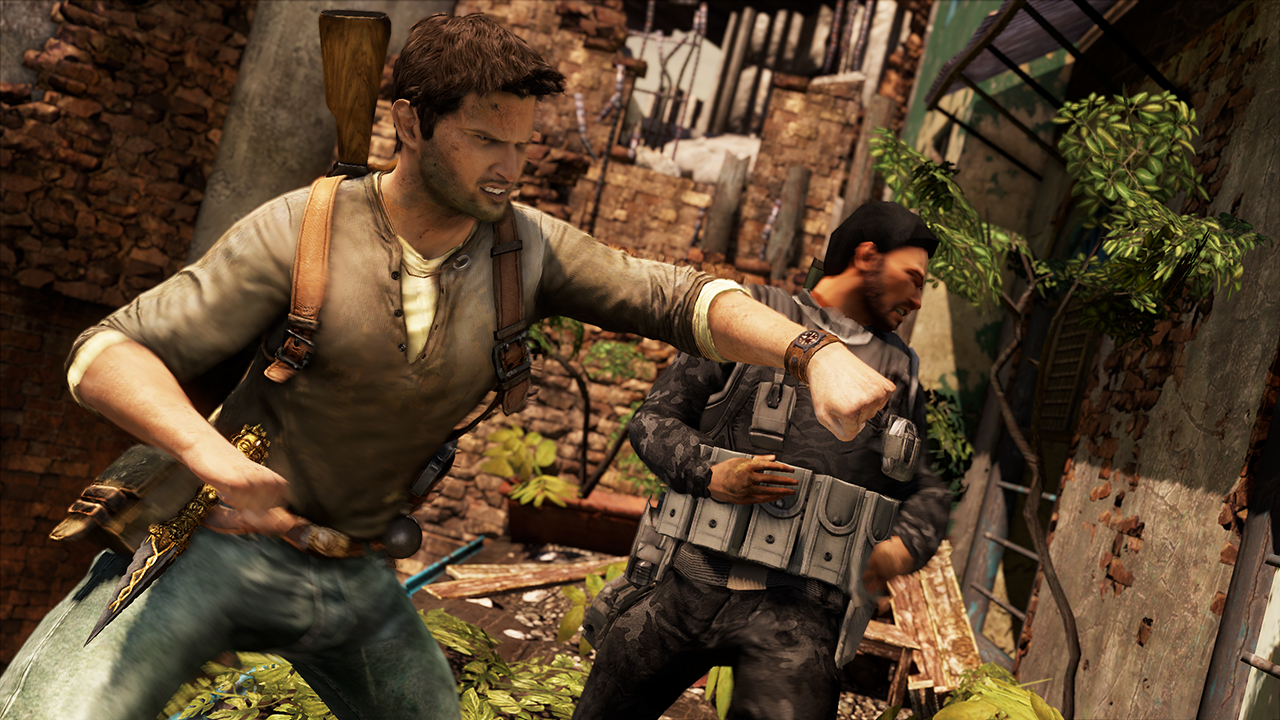
"Sony battened pop the hatches, double toss off on the soothe's exclusives, spell improving aspects such As PlayStation Web and the PS3 development environment"
In answer, Sony battened down the hatches, doubling down happening the cabinet's exclusives, piece improving aspects such as PlayStation Network and the PS3 development environment. In the year leading up to launch, even Sony's internal teams were scrambling to wreak out the console's unique architecture patc also developing games, and financial backing for third-party studios was limited. Getting over this initial hump took a long time, but it felt that PS3 had turned a quoin by the time of the unveiling of the thusly-called Slim model of the console in 2009.
The cheaper and more attractive hardware helped enormously, but what successful the divergence was that PlayStation itself was discharge on all cylinders by this point. The PS3 launch card is arguably the weakest in PlayStation history, and Xbox 360 took chuck-full vantage of being first to market, but over time Sony's first-company studios produced quality white-shoe subsequently quality exclusive, as advisable as genuinely seer titles such as LittleBigPlanet, along with the ahead-of-its-time online environment PlayStation Place. Sony execs such as Harrison were always piercing to greenlight investments in unproven areas, reinforcing a long-standing philosophy that would later lead to the creation of PlayStation VR and, today, PS5's DualSense controller.
By the generation's close, PlayStation 3 had – just about – outsold Xbox 360. The thin margins mean that it still counts as something of a win for Microsoft, which had become a competitor of close stature at just the second time of trying. Nintendo, meanwhile, outsold both and would continue in its own direction. But PlayStation 3 had been saved – and, crucially, a great deal of important lessons had been learned in the process.
Edge Presents Game Changers returns tomorrow at 5pm GMT / 1pm EDT and you can subscribe Edge Cartridge for only $2.77 an issue.
Source: https://www.gamesradar.com/ps3-sony-game-changes-edge/
Posted by: acunaourst1985.blogspot.com



0 Response to "Edge Magazine Presents: Game Changers – Sony's difficult third PlayStation - acunaourst1985"
Post a Comment